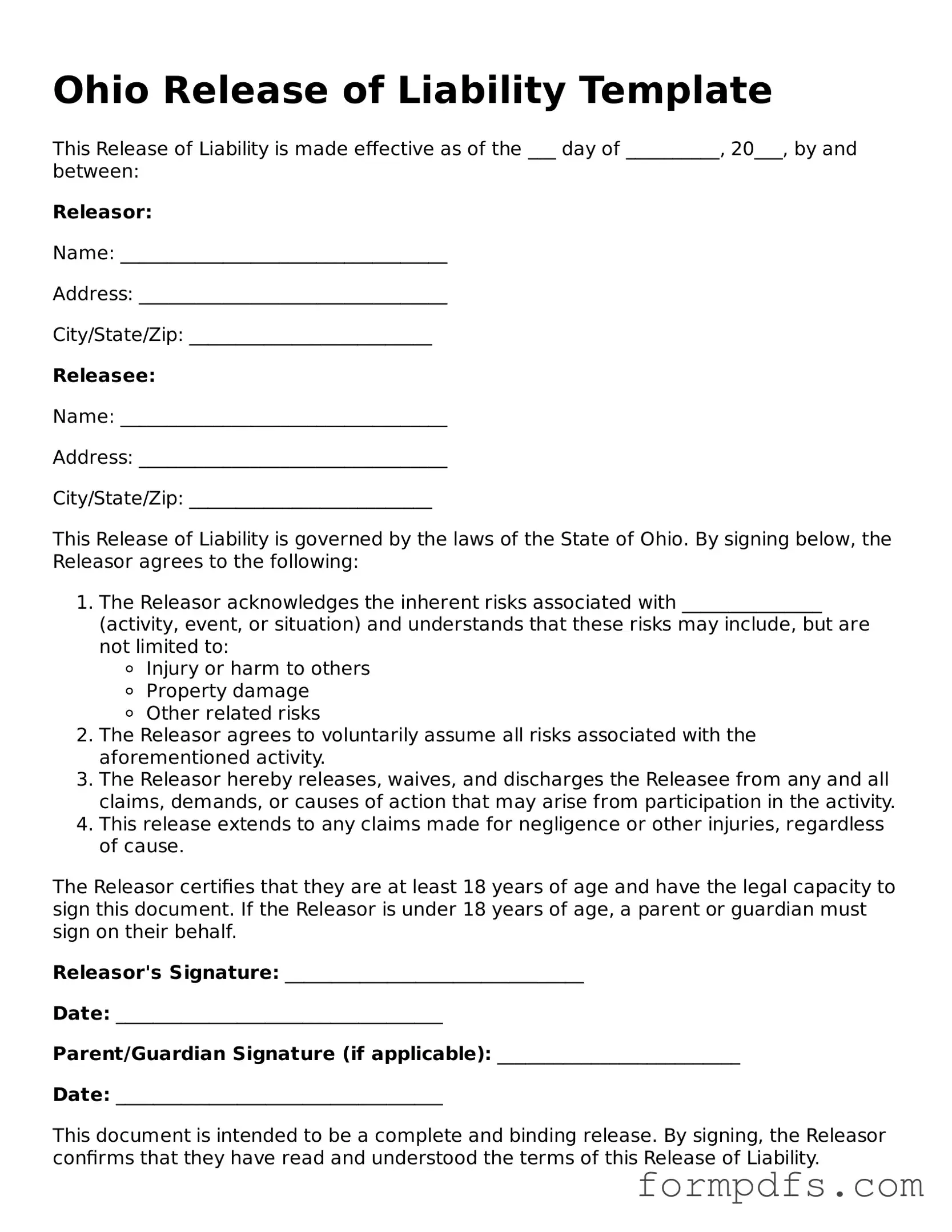What is the purpose of the Ohio Release of Liability form?
The Ohio Release of Liability form is designed to protect individuals and organizations from legal claims resulting from injuries or damages that may occur during specific activities or events. By signing this form, participants acknowledge the inherent risks involved and agree to waive their right to hold the organizers or sponsors responsible for any accidents or injuries that may occur. This form is commonly used in recreational activities, sports events, and other situations where there is a potential for risk.
Who should use the Ohio Release of Liability form?
This form is suitable for individuals or organizations that host activities involving potential risks, such as sports teams, event organizers, or recreational facilities. It is particularly important for activities where participants may face physical risks, such as hiking, biking, or team sports. Participants, including minors, should also be informed about the risks and must provide consent before engaging in the activity.
Is the Ohio Release of Liability form legally binding?
Yes, the Ohio Release of Liability form can be legally binding if it is properly drafted and executed. For the form to be enforceable, it must clearly outline the risks involved, be signed voluntarily by participants, and include specific language that indicates a waiver of liability. However, certain exceptions may apply, especially in cases of gross negligence or willful misconduct. It is advisable to consult with a legal professional for guidance on ensuring the form meets all necessary legal standards.
Can minors sign the Ohio Release of Liability form?
Minors cannot legally sign contracts, including the Release of Liability form, without parental or guardian consent. Therefore, a parent or legal guardian must sign the form on behalf of the minor. This ensures that the minor is protected while also allowing the organizers to mitigate their liability. It is important to provide clear information about the activity and its risks to the parent or guardian before they sign the document.
